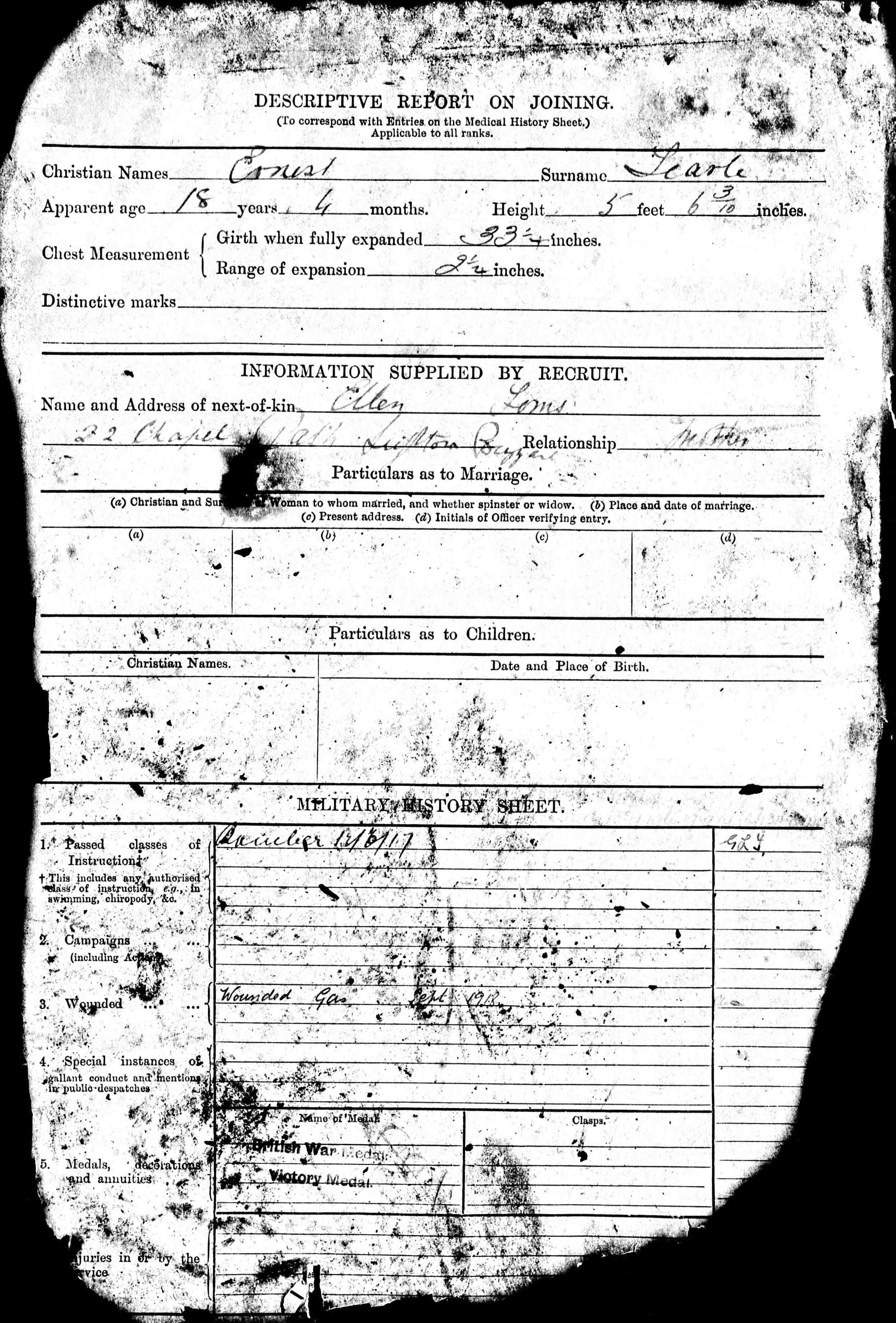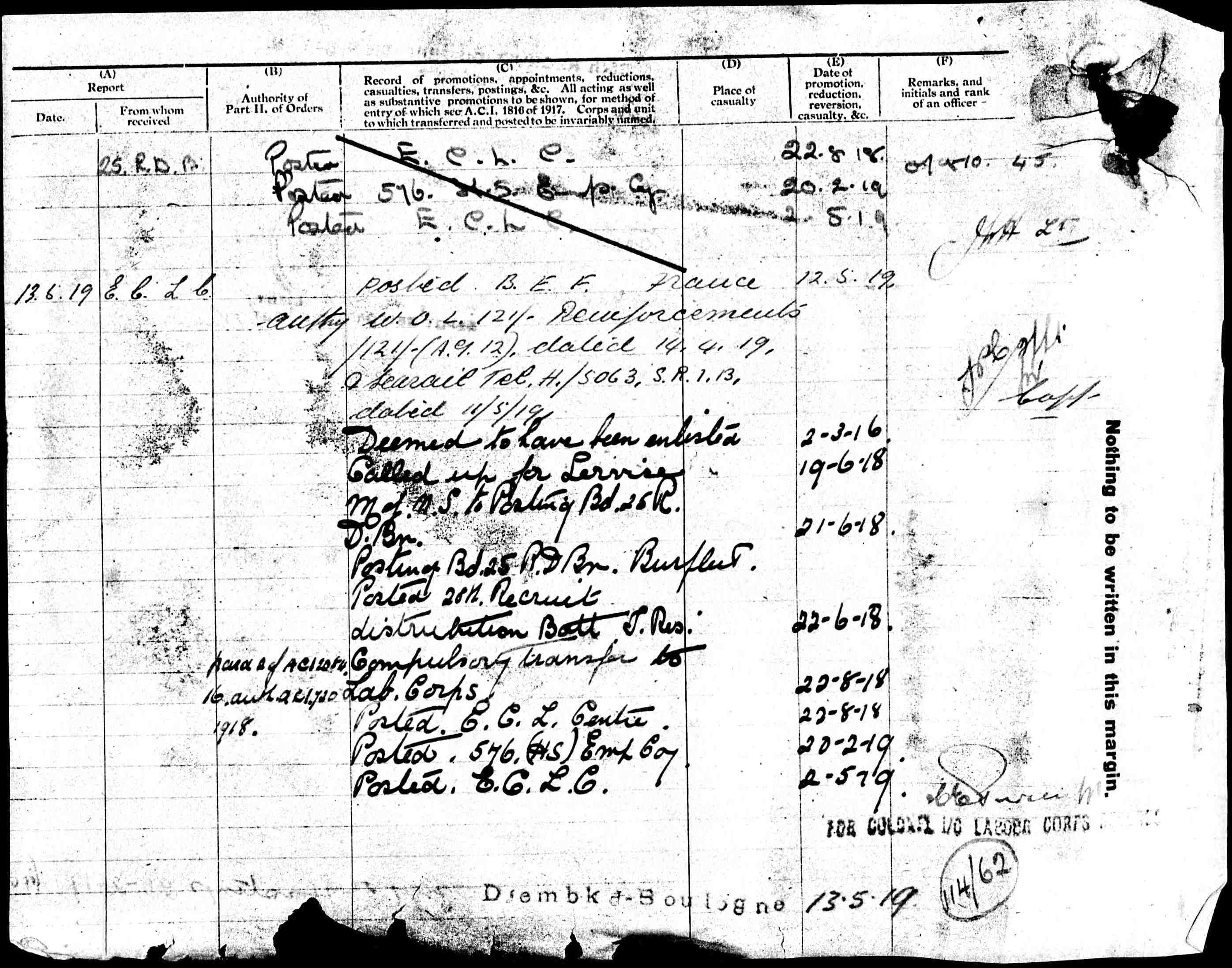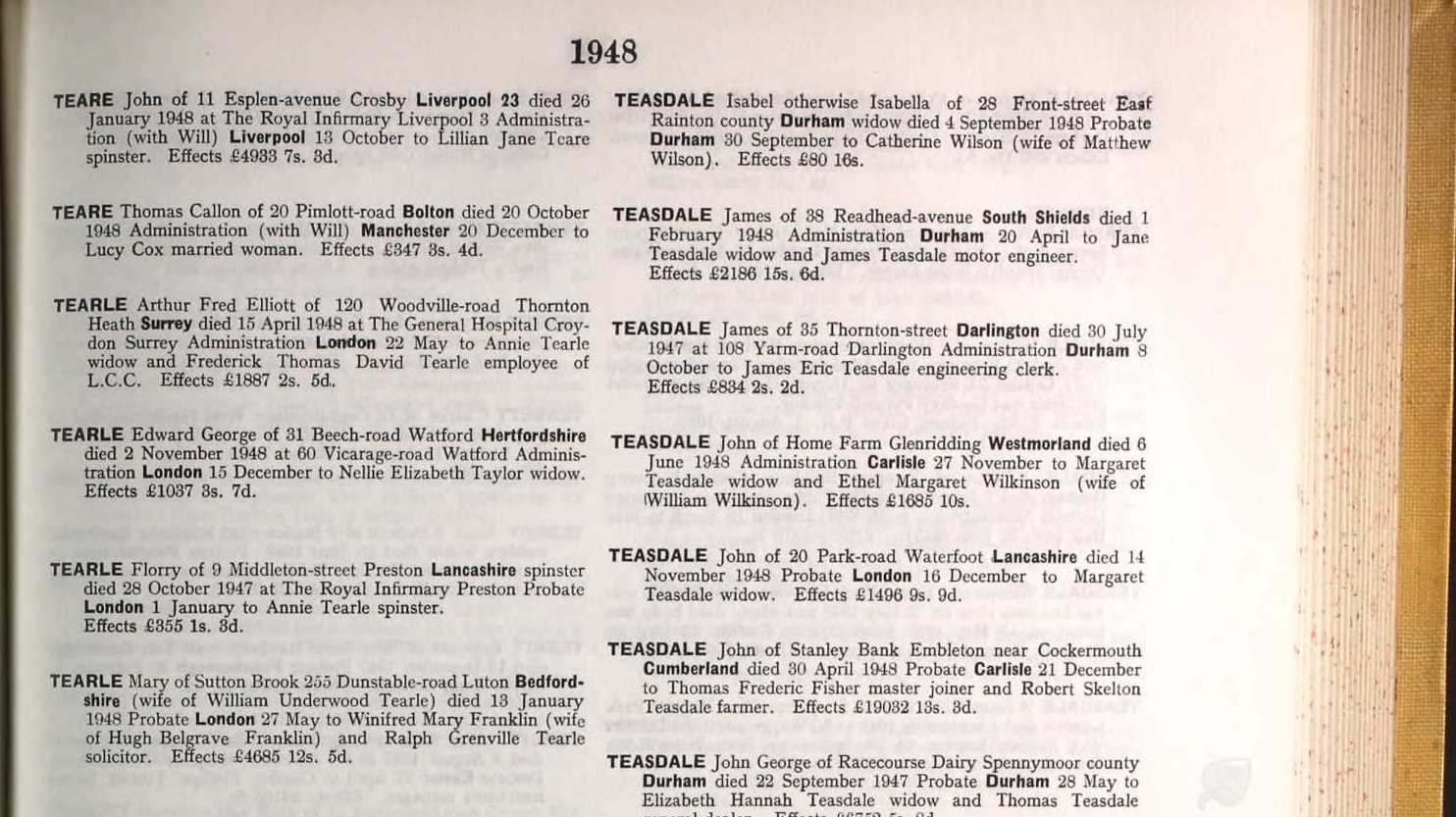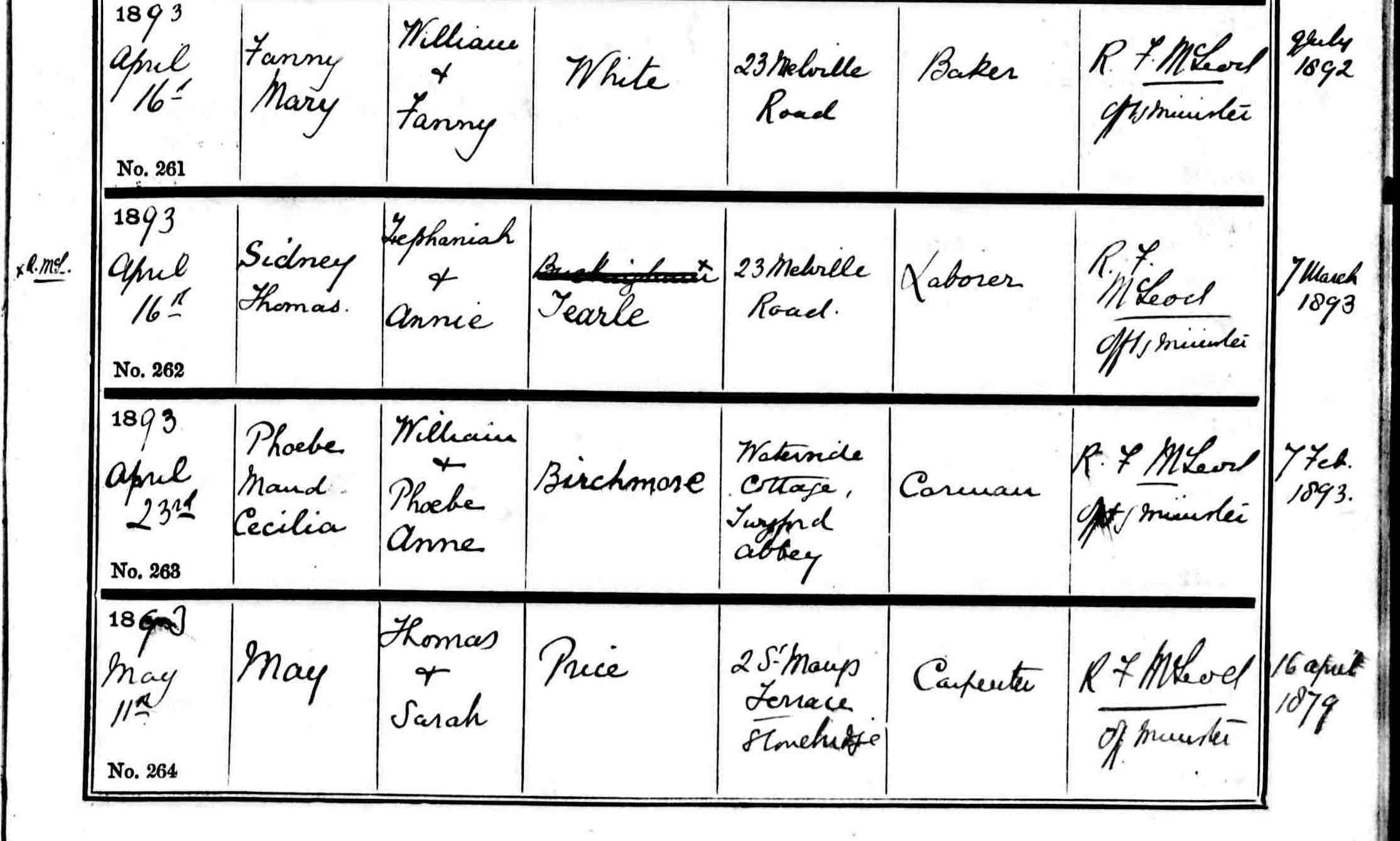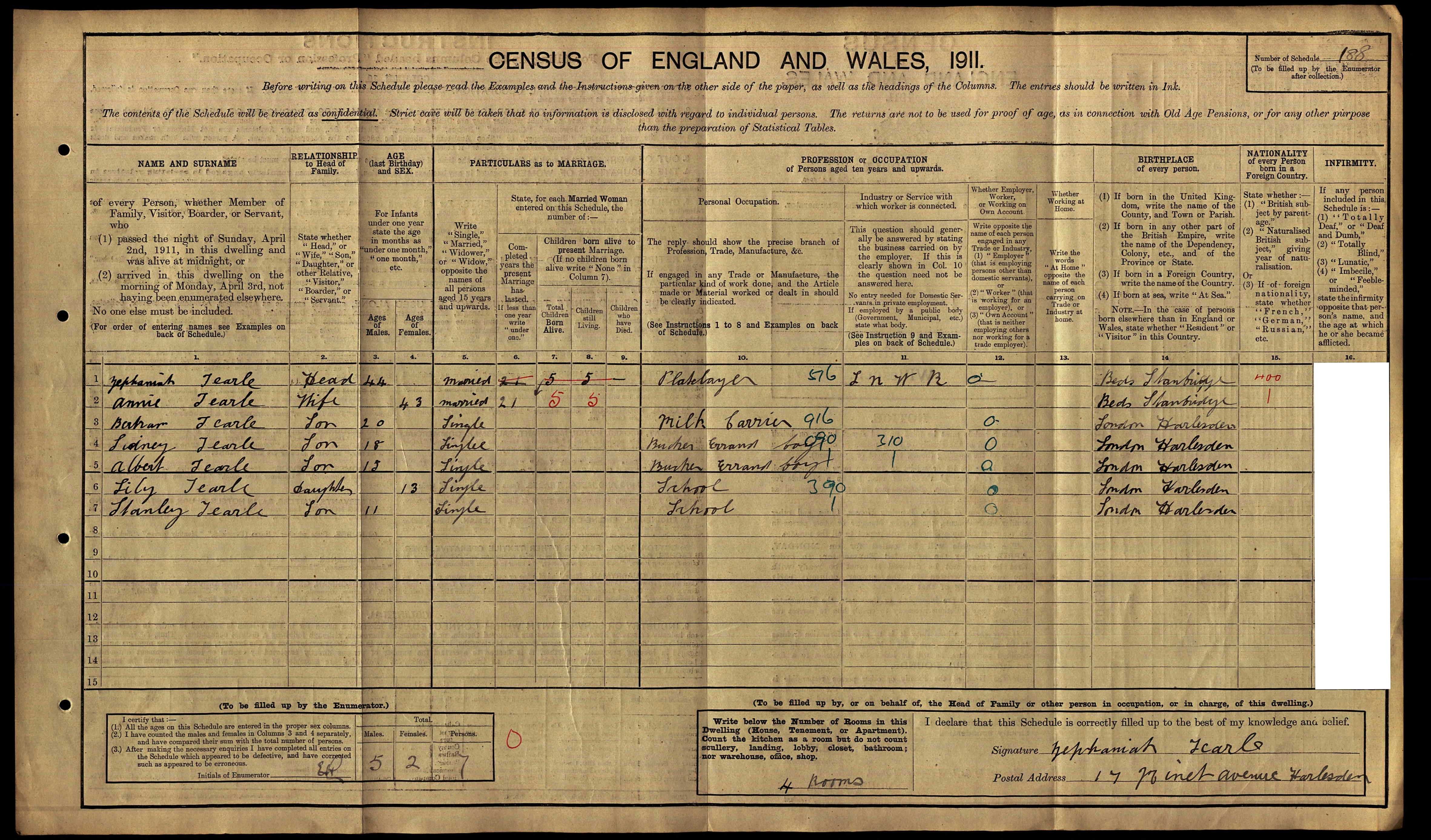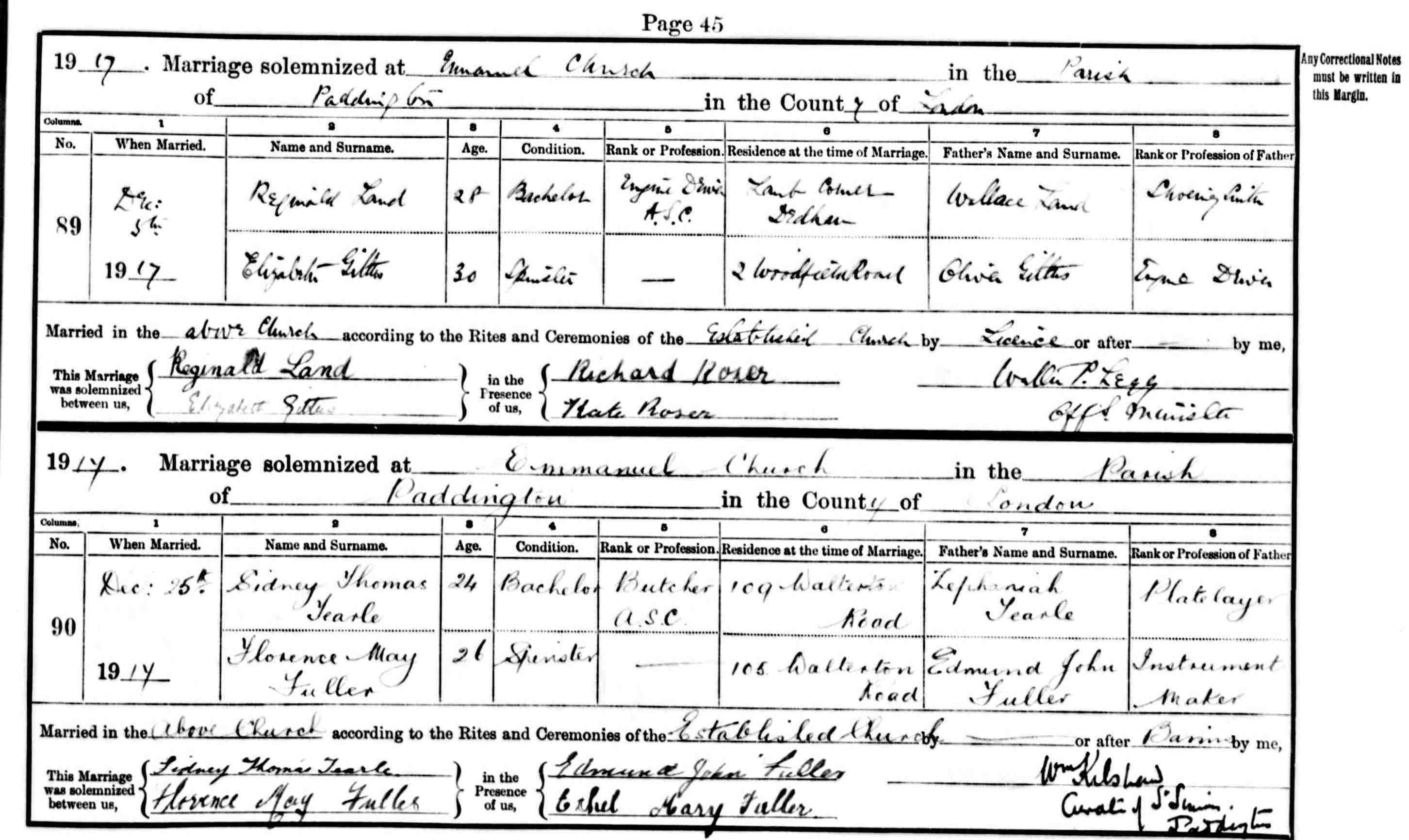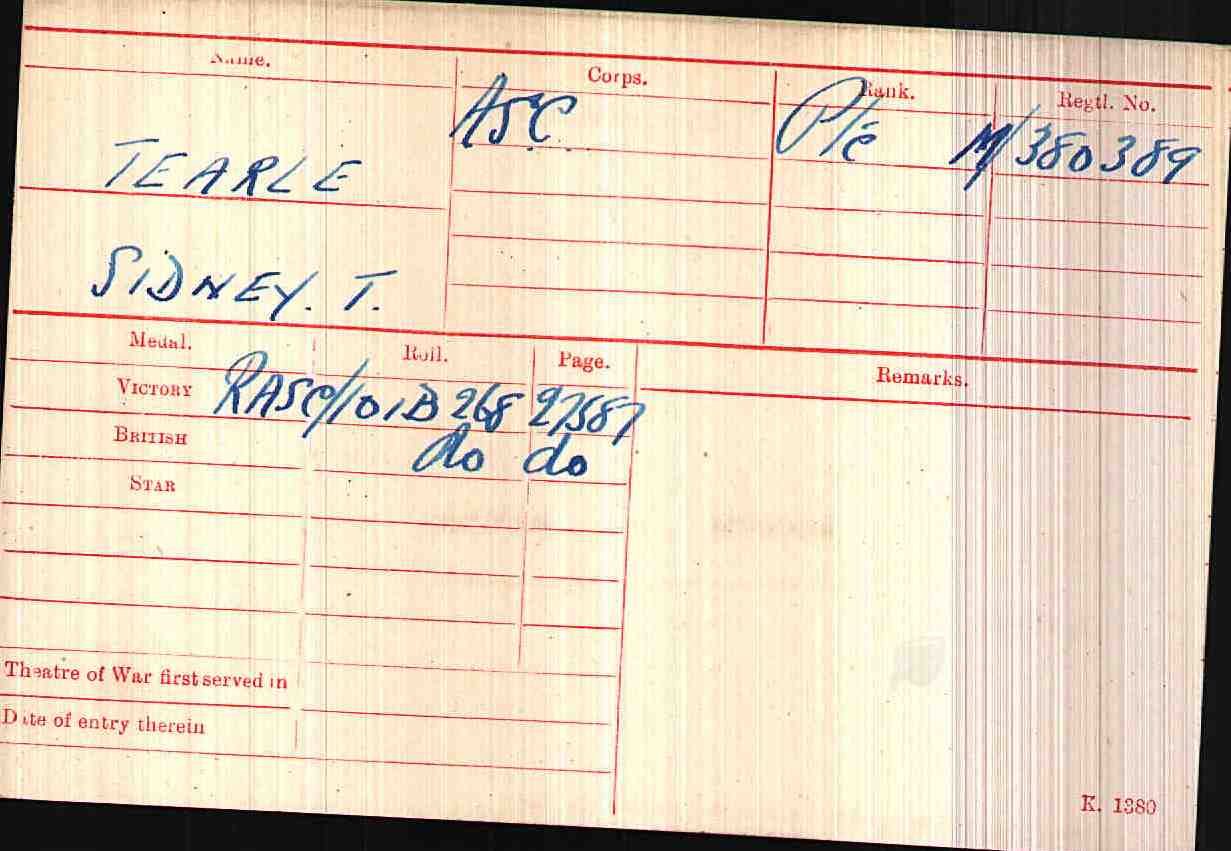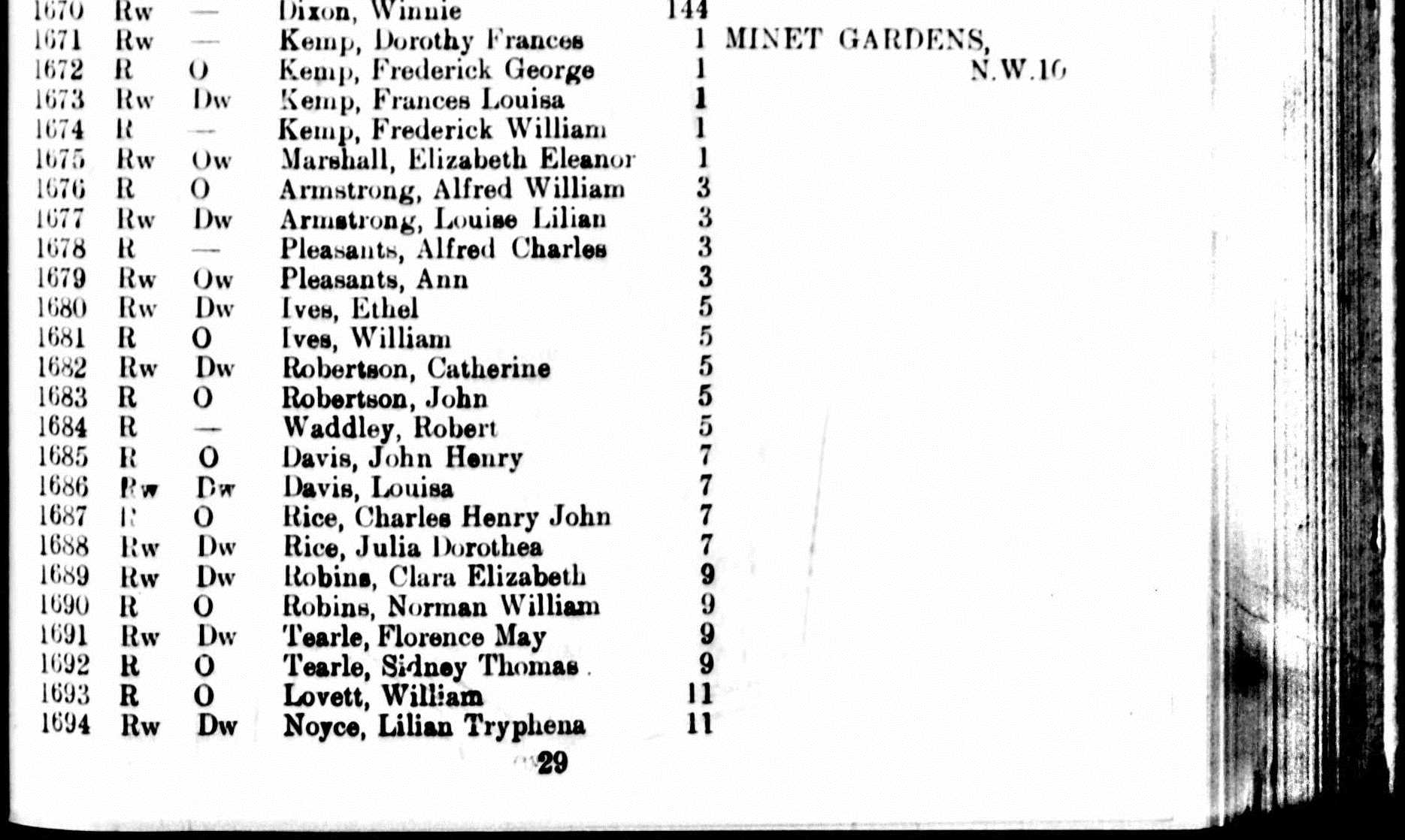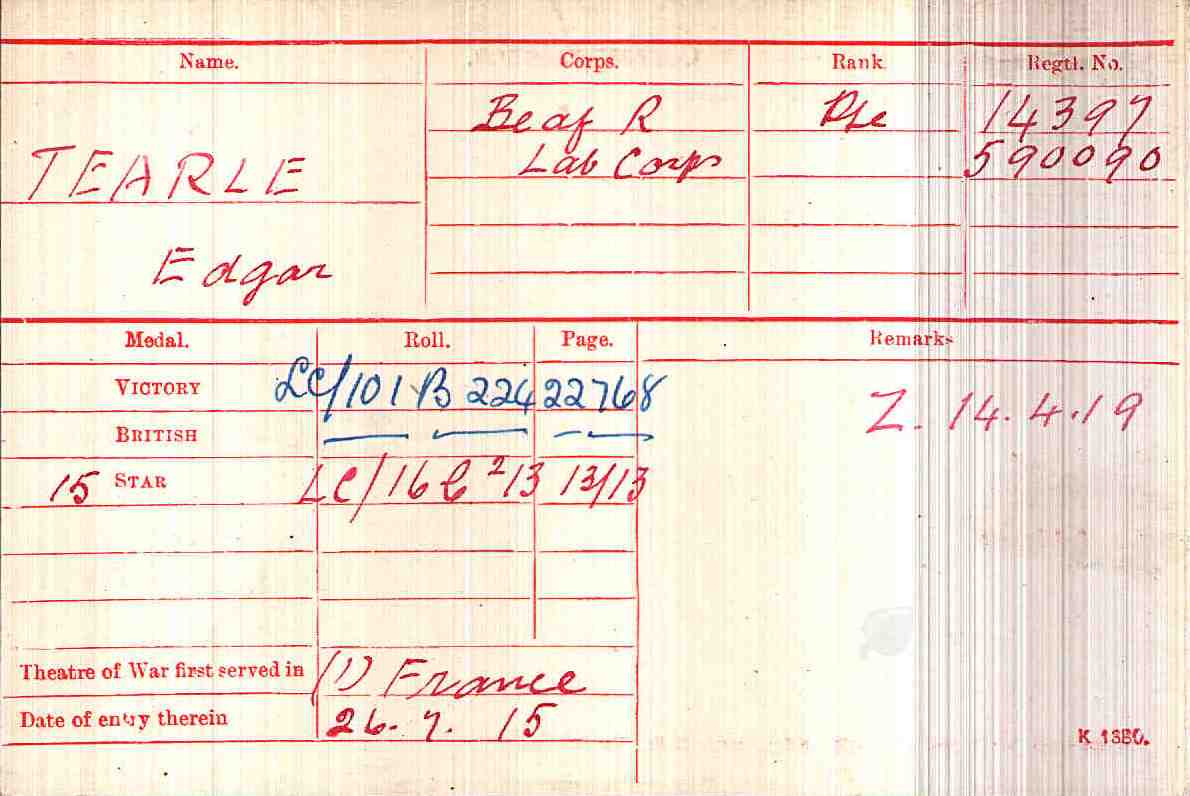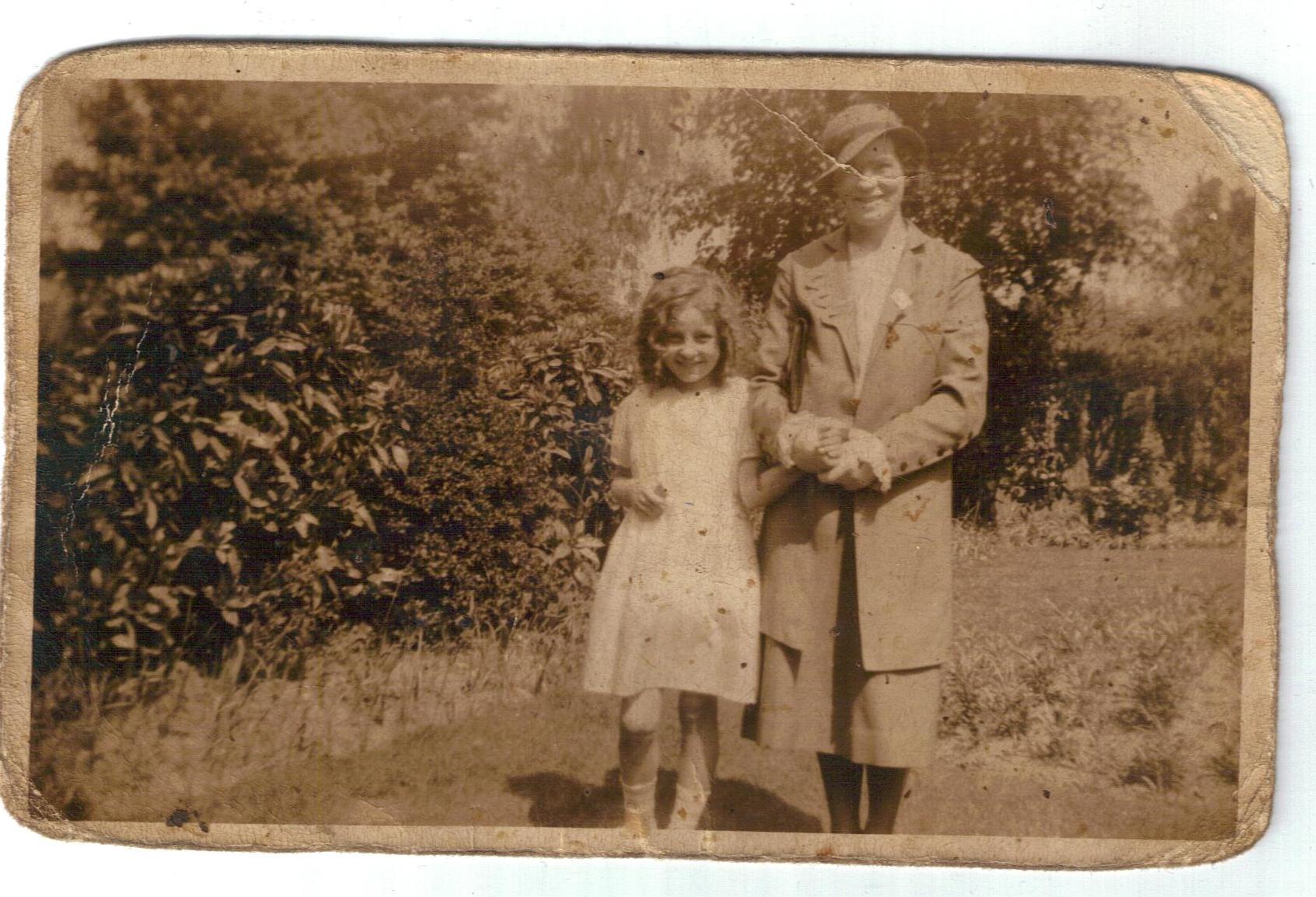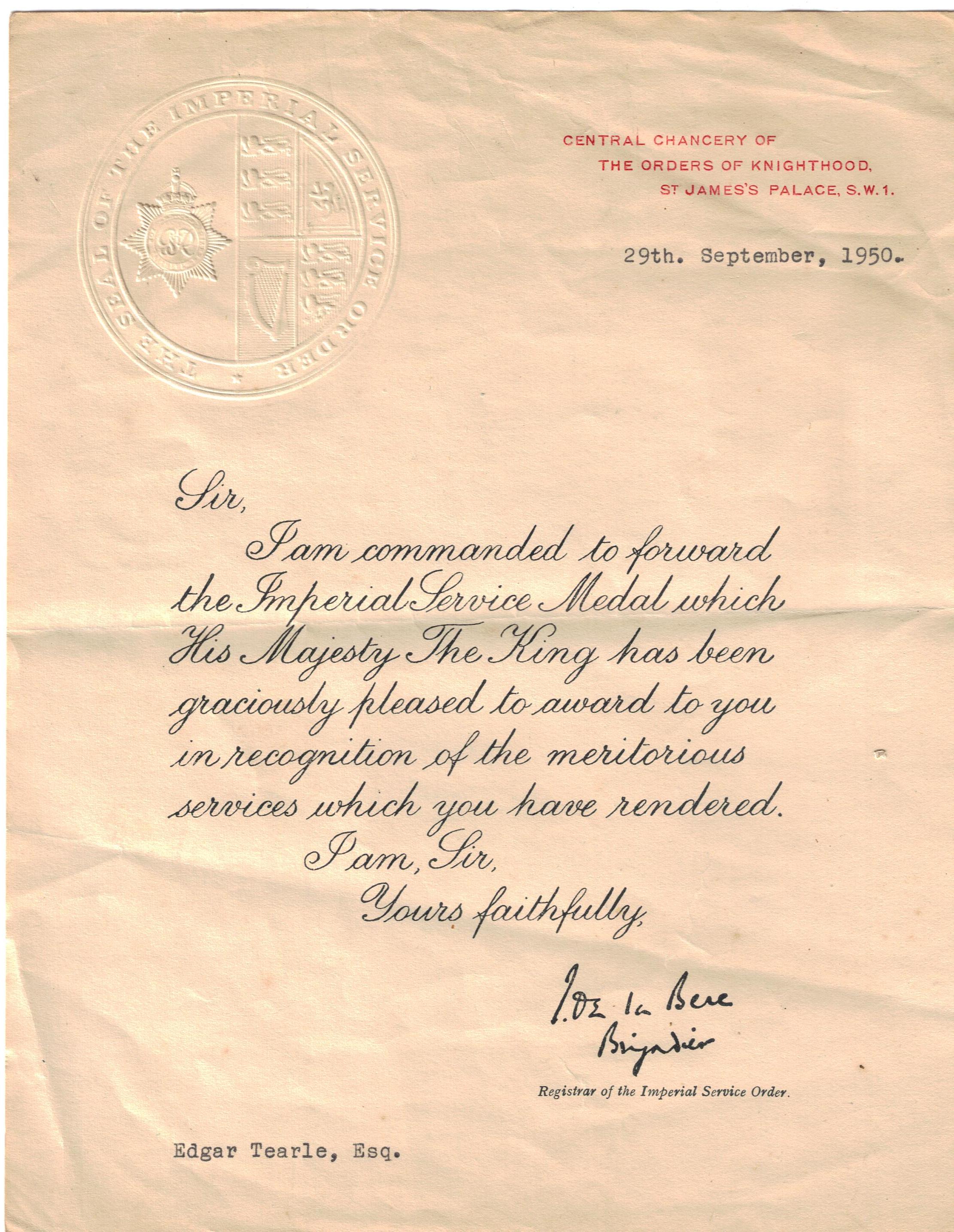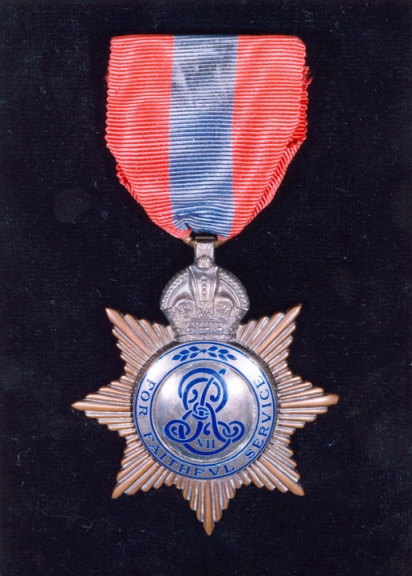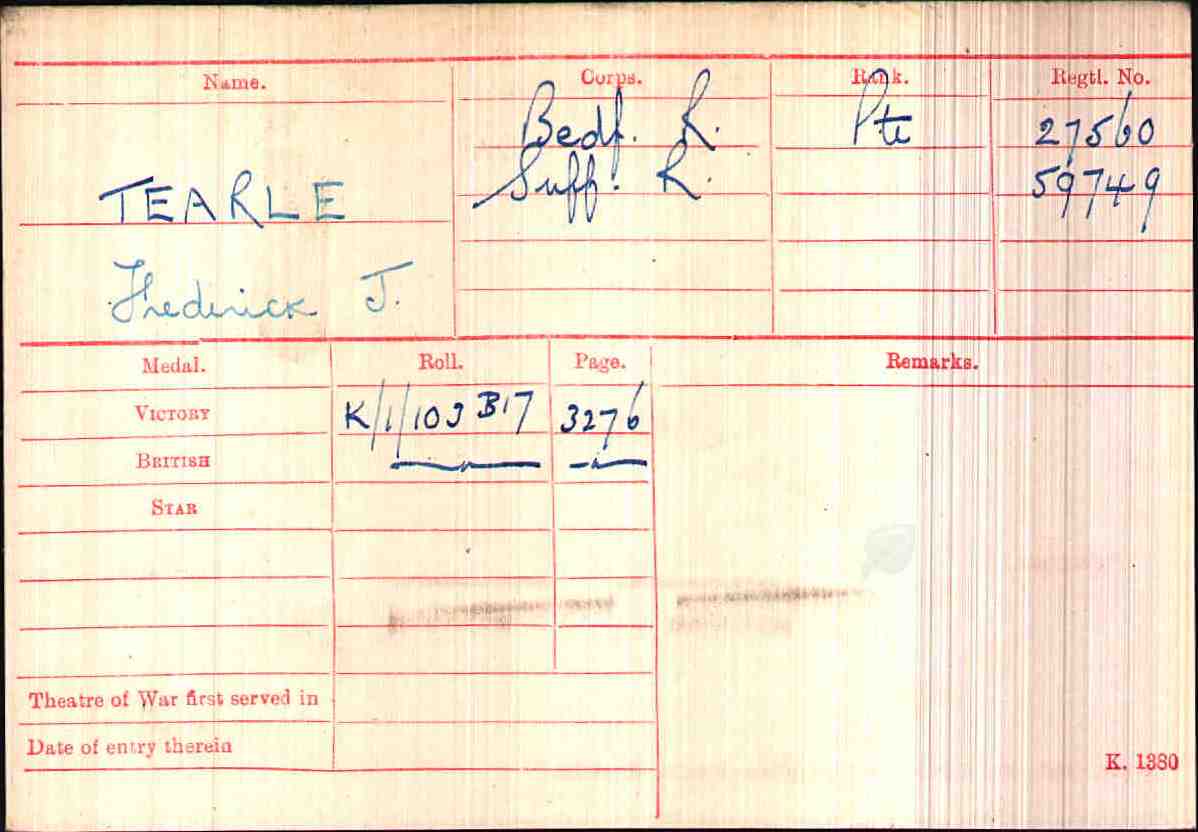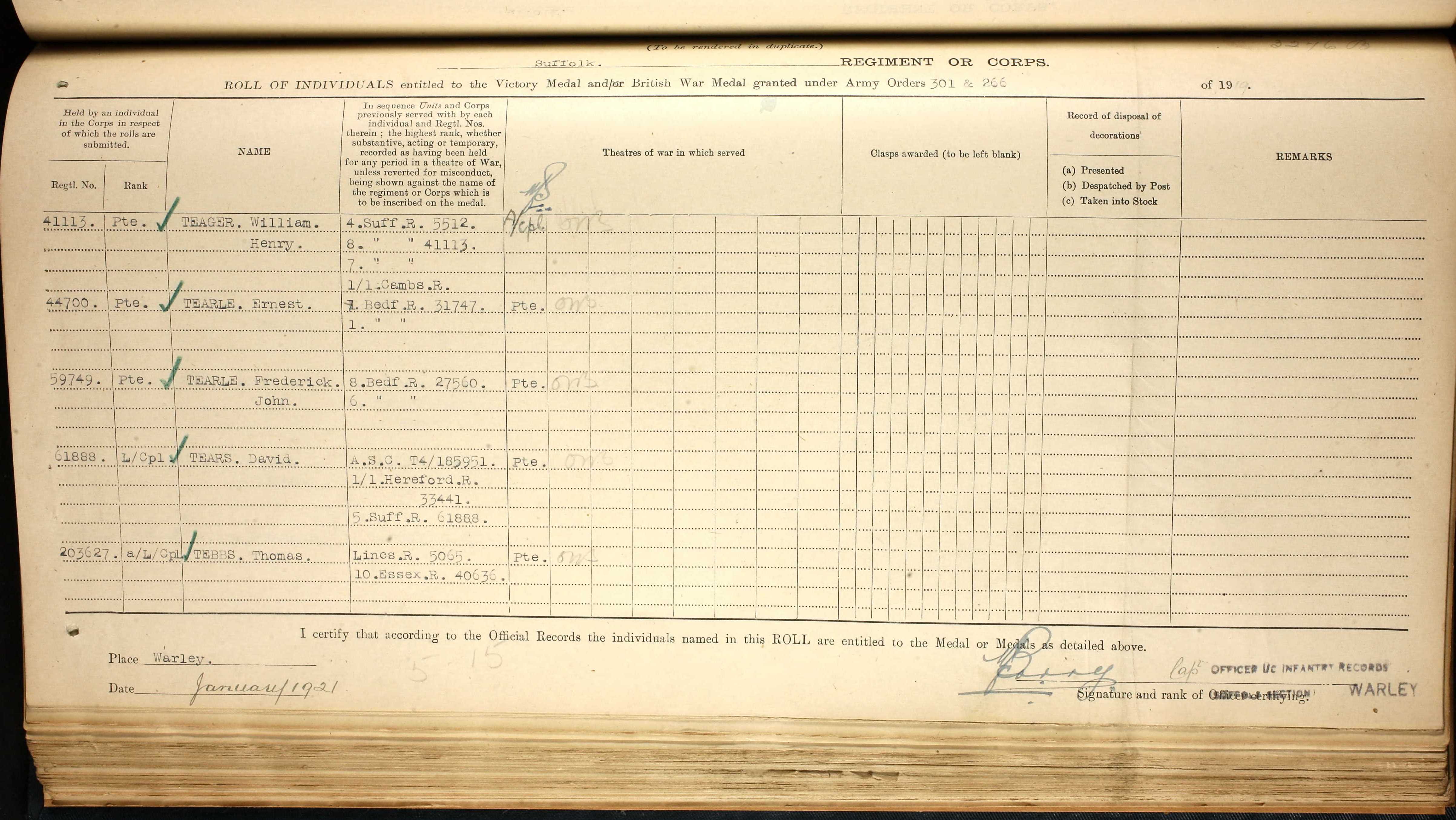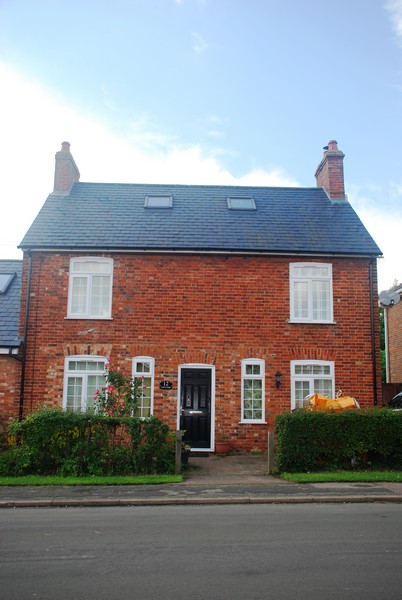Ernest John Tearle 1898, of Leighton Buzzard, was called up for service in the Bedfordshire Regiment on 20 Nov 1916, having enlisted in March that year. He joined the 3rd Battalion on a D.W. engagement, meaning he would be in the army for the duration of the war. He was 18 years 4 months old, 5 feet 6in tall, with only “fair” physical development, and he was a labourer. Here is his entry in National Roll of the Great War.
This is a very good potted war biography, but I do not want to hide the seriousness of Ernest’s survival problems. The battles above were killing fields on a vast scale – just look at the names – and Ernest surviving all of this must have been very rueful about being gassed in the last month. Here is the evidence that he scraped through the war:
You can see the number change, he was transferred to the Suffolk Regiment, I think mostly for administrative reasons, and they reviewed all his records, because it was the last regiment a soldier belonged to that determined the service medals that he would earn.
There was a little compassion, though. Armistice Day was 11 November 1918, but Ernest was still in France, probably helping to clean up the mess, when he applied for, and was granted leave to England. It was from 28 April 1919 until 12 May 1919. You would wonder how the ferry and the trains would get him there and back in such a short time. Finally, on 19 November 1919, fully a year after the Armistice, Ernest was allowed home – as a Class “Z” soldier. In other words if the army wanted him for anything, they were at their liberty to demand it of him. On 30 November 1919, he left France, hugely relieved, no doubt, that the war was over, and he had survived it. He would also have been relieved to remember that his brother, Harry Edward Tearle 1900, who had joined the navy, had also kept his head down and stayed alive.
His life after the war is difficult to trace. I can find no conclusive evidence he was ever married; a marriage of Ernest J Tearle to Thelma J Cole in 1953 may be our Ernest, but is very late in life, and would most likely preclude his having any children. Meanwhile, the marriage in 1926 of Ernest Tearle in Wellingborough to Ada E E Clifton was preceded by the birth, in Wellingborough, of Ernest Tearle in 1897, so this chap is not the object of our National Roll study.
We do know that he died in Luton in 1971, but I can find no trace of his will, or his probate, which may have helped to fill in a few of the details of his post-war life.
It’s my responsibility, now, to record his biographical details:
He was baptised in St Andrews Church, Leighton Buzzard, on 24 June 1912, having been born on 21 June 1898, at 12 Chapel Path Leighton Buzzard, the son of Ellen Tearle 1881 of Hockliffe. Ellen had four children all with the surname Tearle, and then in 1913 she married Harry Toms, followed by two Toms children. She was the eldest daughter of Jane Tearle 1856 of Hockliffe, who had four children in Hockliffe between 1881 and 1887. Her youngest son, Albert Tearle 1887 of Hockliffe, who would be Ernest’s uncle, was in the Royal Engineers during WW1. Jane’s parents were John Tearle 1823 of Stanbridge and Hannah nee Creamer. We cannot tell what John did for a living; he was classified as an Ag Lab in his census returns, while Hannah worked industriously as a straw plaiter. No matter how skilled John’s work was, the fact that he worked on farms, or for farmers, meant that he was simply an agricultural labourer.
John’s parents were Thomas Tearle 1792 of Ivinghoe Aston, just over the border in Buckinghamshire, and Jemima Cleaver. Thomas’ parents were John Tearle 1770 of Stanbridge and Mary nee Janes, and this John’s parents were John 1741 and Martha nee Archer. So our Ernest is on the branch of John 1741, the same as me.

